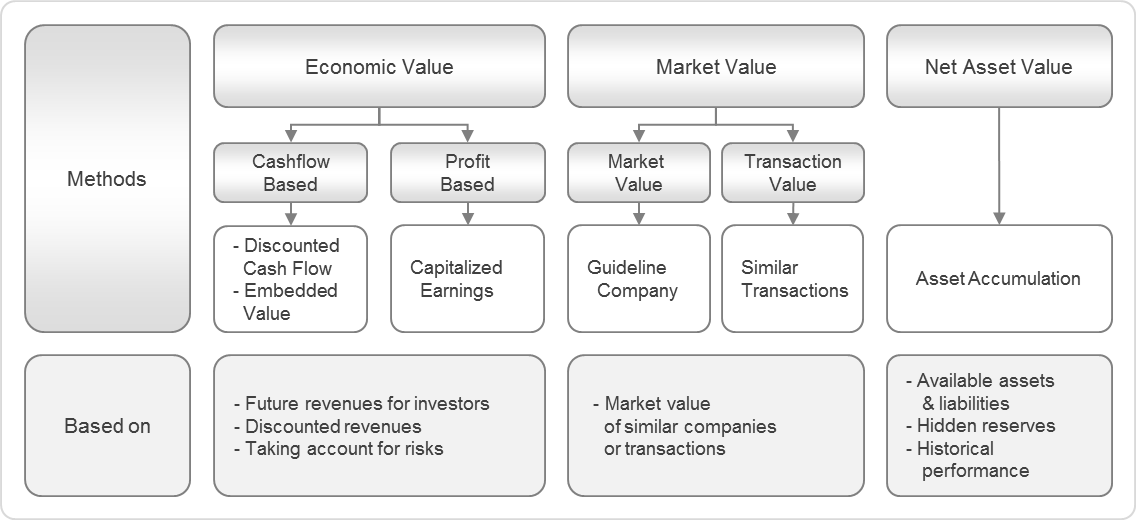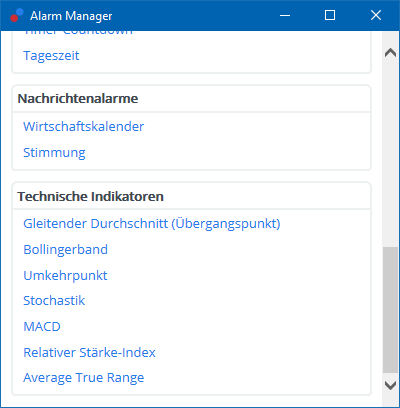
Consumer’s income is one of the major factors that determine demand of a product. An alternative to point elasticity is the arc elasticity which tells you what the elasticity is between the two points. They are both related concepts and they are both price elasticities. In the formula, p refers to the original price (p1) and q to original quantity (q1). The opposite is the case in example (i) below, where Rs. 3 becomes the original price and 30 kgs.

Under point elasticity, you need a mathematical function (demand curve) to define the relationship between price and quantity demanded. You cannot calculate the point elastic directly because it produces bias. Therefore, you have to find it through statistical inferences from actual observations. In our first example, an increase in price increased total revenue. In the second, a price increase left total revenue unchanged. Is there a way to predict how a price change will affect total revenue?
Methods of Measurement of Price Elasticity of Demand
In economics, arc elasticity is commonly used in relation to the law of demand to measure percentage changes between the quantity of goods demanded and prices. The point method of measuring price elasticity of demand was also devised by prof. Alfred Marshall. This method is used to measure the price elasticity of demand at any given point in the curve. Price elasticity of demand is a measure of the degree of change in demand of a commodity to the change in price of that commodity. Let us take a point on a linear demand curve and measure the elasticity of demand at that particular point.
In December 1996, Israel sharply increased the fine for driving through a red light. The old fine of 400 shekels (this was equal at that time to $122 in the United States) was increased to 1,000 shekels ($305). In January 1998, California raised its fine for the offense from $104 to $271. The country of Israel and the city of San Francisco installed cameras at several intersections. Drivers who ignored stoplights got their pictures taken and automatically received citations imposing the new higher fines. Stack Exchange network consists of 183 Q&A communities including Stack Overflow, the largest, most trusted online community for developers to learn, share their knowledge, and build their careers.

A movement from point A to point B shows that a $0.10 reduction in price increases the number of rides per day by 20,000. A movement from B to A is a $0.10 increase in price, which reduces quantity demanded by 20,000 rides per day. In the context of economics, elasticity is used to measure the change in the quantity demanded for a product in relation to its price movements. A product is considered to be elastic if the demand for it changes substantially when its price changes.
This method produces a consistent elasticity value, regardless of whether the price is rising or falling. That’s because we are using the average as the denominator arc method of elasticity of demand for both the price and the quantity demanded. Arc elasticity of demand is more useful than price elasticity of demand when there is a considerable change in price.
For any linear demand curve, the absolute value of the price elasticity of demand will fall as we move down and to the right along the curve. In the above figure five points L, M, N, P, and Q are taken on the given linear demand curve. The elasticity of demand at each point can be identified with the help of the above method. Suppose the N point is in the exact center of the given demand curve. It is because at the mid-point of the demand curve the lower segment and upper segment of the demand curve are equal. As we already mentioned earlier, this method measures the elasticity of demand considering the change in total spending incurred on a commodity as a result of the change in the price of the commodity.
Arc Elasticity of Demand
When we reduce the price and move to point B, the rectangle showing total revenue becomes shorter and wider. Notice that the area gained in moving to the rectangle at B is greater than the area lost; total revenue rises to $42,000 ($0.70 × 60,000). Recall from Figure 5.2 “Price Elasticities of Demand for a Linear Demand Curve” that demand is elastic between points A and B.
We have already calculated the price elasticity of demand between points A and B; it equals −3.00. Notice, however, that when we use the same method to compute the price elasticity of demand between other sets of points, our answer varies. For each of the pairs of points shown, the changes in price and quantity demanded are the same (a $0.10 decrease in price and 20,000 additional rides per day, respectively). But at the high prices and low quantities on the upper part of the demand curve, the percentage change in quantity is relatively large, whereas the percentage change in price is relatively small. The absolute value of the price elasticity of demand is thus relatively large.
Methods of Measuring Price Elasticity of Demand
The following table and graph illustrate the inelastic demand case in the total outlay method. So, we have to use the arc method to measure the price elasticity of demand when the change in price and quantity is larger. In the case of the non-linear demand curve, the use of the arc method is more suitable.
Preparation and characterization of novel as-cast Ti-Mo-Nb alloys … – Nature.com
Preparation and characterization of novel as-cast Ti-Mo-Nb alloys ….
Posted: Wed, 13 Jul 2022 07:00:00 GMT [source]
Between points C and D, for example, the price elasticity of demand is −1.00, and between points E and F the price elasticity of demand is −0.33. We only reversed the price and quantity demanded to their original state. Rather than using initial price and initial quantity points, the arc elasticity method uses midpoints (average price and average quantity) in determining elasticity coefficients. Thus, when total expenditure moves with a change in price in a positive direction then it is inelastic demand. In another world, inelastic demand is the case in which there is a positive or direct relationship between the price of the good and the total expenditure of a buyer on that good.
1 The Price Elasticity of Demand
By using this method, we can sort three types of elasticities. However, one of the issues of using this method is that the percentage change depends on the base or the starting point. Should we charge the initial price or quantity as the starting point is a considerable matter? Thus the point method of measuring elasticity at two points on a demand curve gives different elasticity coefficients because we used a different base in computing the percentage change in each case.
- So it appears that the impact of a price change on total revenue depends on the initial price and, by implication, the original elasticity.
- Recall from Figure 5.2 “Price Elasticities of Demand for a Linear Demand Curve” that demand is elastic between points A and B.
- A change in the price of jeans, for example, is probably more important in your budget than a change in the price of pencils.
- Increasing the price of a particular behavior reduced the frequency of that behavior.
In the figure, we can see that AB is an arc on the demand curve DD, and point C is the mid-point on AB. If we followed point method to measure PED at points A and B in the curve DD, we get different coefficients as a result of using different bases. To avoid this discrepancy, elasticity is measured by taking mean values of price and quantity demanded in arc method. Again, assume that the price and quantity demanded revert to their prior levels, determine the arc elasticity coefficient again and see the result. Under the total outlay method, the measurement of elasticity only lets us know whether it is unitary, greater, or less than unitary.
By restricting supply, OPEC, which produces about 45% of the world’s crude oil, is able to put upward pressure on the price of crude. That increases OPEC’s (and all other oil producers’) total revenues and reduces total costs. As illustrated in Figure 5.5 “Demand Curves with Constant Price Elasticities”, several other types of demand curves have the same elasticity at every point on them. This means that even the smallest price changes have enormous effects on quantity demanded. The denominator of the formula given in Equation 5.2 for the price elasticity of demand (percentage change in price) approaches zero. The price elasticity of demand in this case is therefore infinite, and the demand curve is said to be perfectly elastic.
In general, the results showed that people responded rationally to the increases in fines. Increasing the price of a particular behavior reduced the frequency of that behavior. The study also points out the effectiveness of cameras as an enforcement technique. With cameras, violators can be certain they will be cited if they ignore a red light. And reducing the number of people running red lights clearly saves lives.
BHP’s economic and commodity outlook – BHP
BHP’s economic and commodity outlook.
Posted: Tue, 15 Feb 2022 08:00:00 GMT [source]
The concept of elasticity gives us a way to show just how responsive drivers were to the increase in fines. We have already made this point in the context of the transit authority. Consider the following three examples of price increases for gasoline, pizza, and diet cola. Since we’re concerned with the absolute values in price elasticity, the negative sign is ignored.
Example of Price-Point Elasticity
Saying that the price elasticity of demand is infinite requires that we say the denominator “approaches” zero. 1Notice that since the number of units sold of a good is the same as the number of units bought, the definition for total revenue could also be used to define total spending. If we are trying to determine what happens to revenues of sellers, then we are asking about total revenue. If we are trying to determine how much consumers spend, then we are asking about total spending. For most countries, price elasticity of demand for crude oil tends to be greater (in absolute value) in the long run than in the short run.
- So, this method is suitable when a change in price and the consequent change in quantity demanded are very small.
- With a downward-sloping demand curve, price and quantity demanded move in opposite directions, so the price elasticity of demand is always negative.
- This coefficient (Ep) measures the percentage change in the quantity of a commodity demanded resulting from a given percentage change in its price.
- In the figure, the demand curve DD is elastic demand showing an increased change in total expenditure with a decrease in the price of the commodity.
- A change in pencil prices, in contrast, might lead to very little reduction in quantity demanded simply because pencils are not likely to loom large in household budgets.
Thus, arc elasticity is useful when there is a significant price change. However, if the change in price and quantity demanded is very small, the two methods tend to produce a close value. We can use two methods to calculate the elasticity of demand, point elasticity, and arc elasticity.
Similarly, airfare is higher for flights booked closer to the travel date compared to those booked in advance. It is estimated that people who book flights at shorter notice are in urgent need of travel and show an inelastic demand. Therefore, airline companies charge higher prices to such travelers. Arc elasticity is an alternative approach to measure elasticity rather than using price elasticity. Based on whether elasticity is equal to, greater than, or less than one, demand is considered unit elastic, elastic, and inelastic.